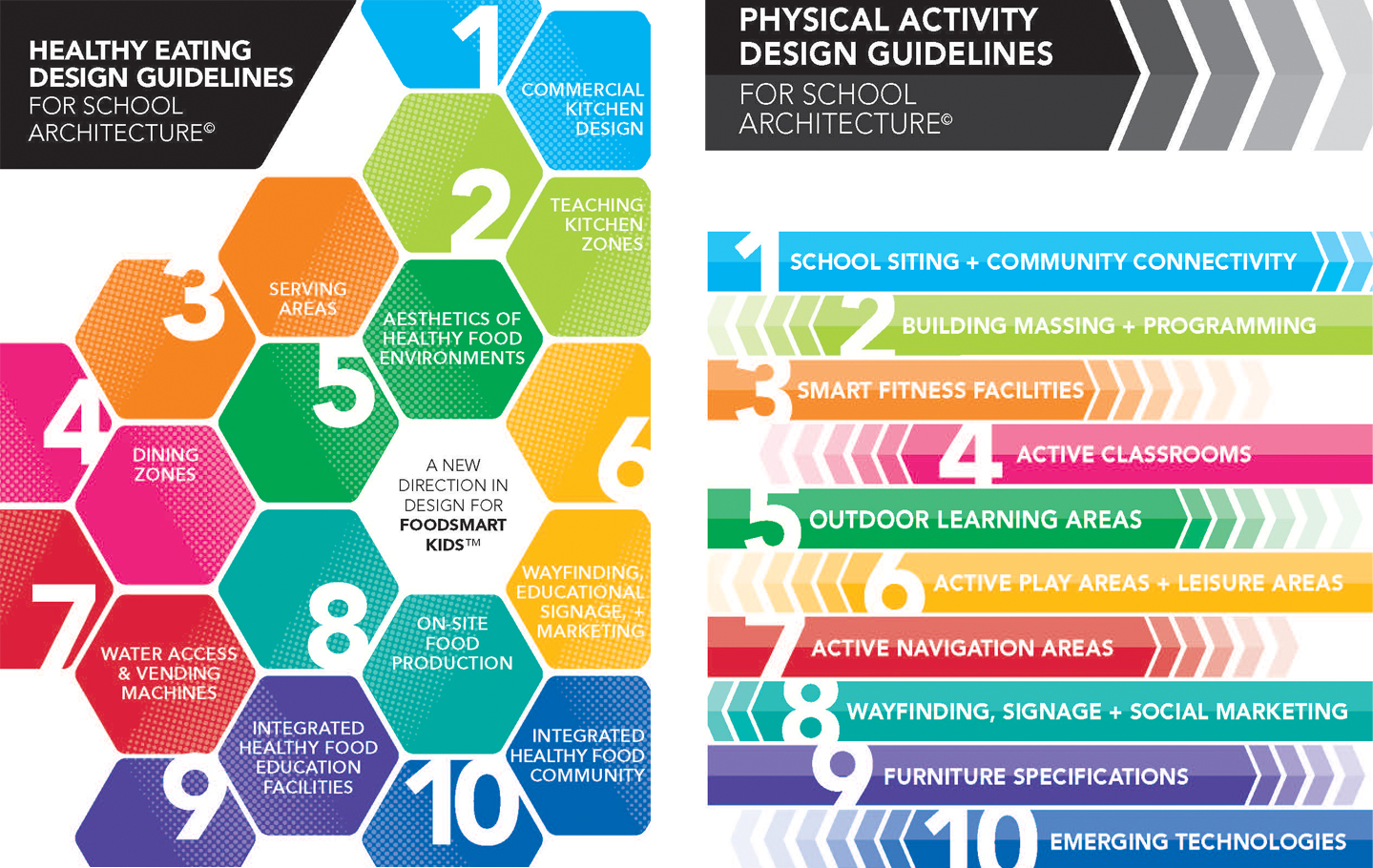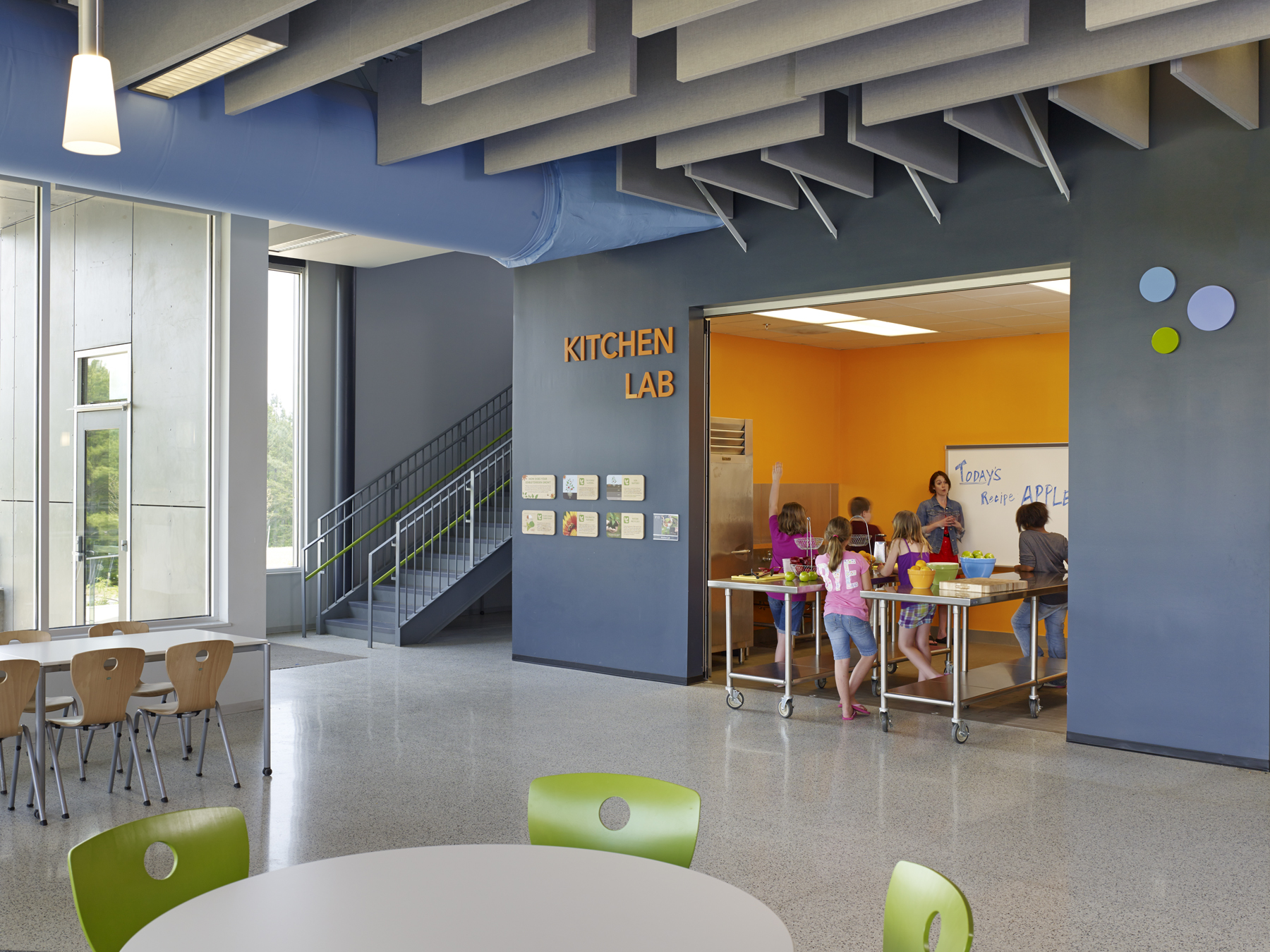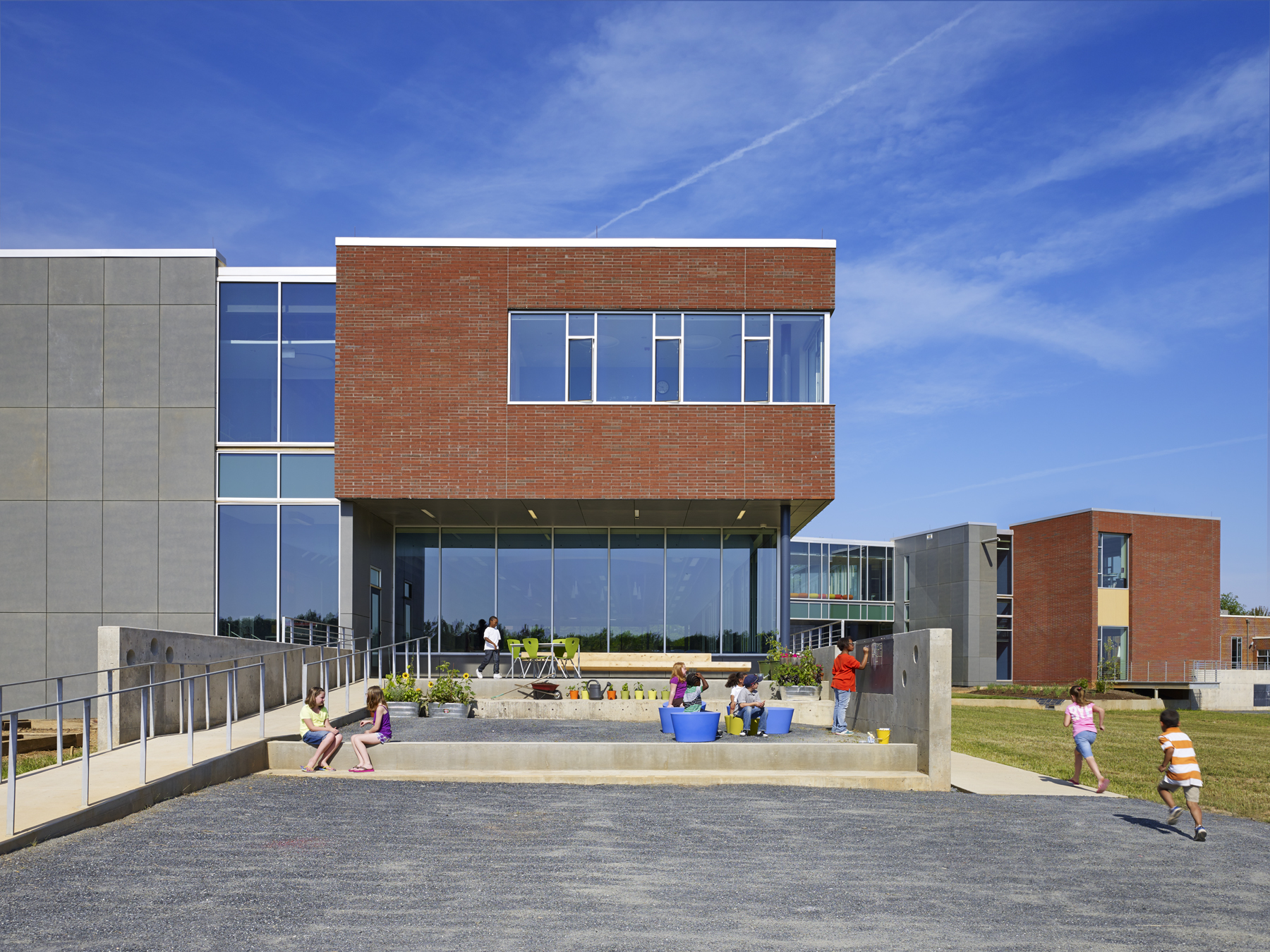Co-designed by a team of educators, public health researchers, pediatricians, social scientists, children, and designers, the Healthy Eating Design Guidelines (HEDG) and Physical Activity Design Guidelines (PADG) synthesize research findings in environmental health, environmental psychology, behavioral economics, and socio-ecological models to create new planning tools for school architecture.

To date, the HEDG and PADG have been published by the Centers for Design Control (2013) and PLOS ONE (2015), respectively, and were piloted during the design of Buckingham County Public Schools’ Carter G. Woodson Complex, which opened in 2012 in Dillwyn, Virginia. Featuring over 20 evidence-based spatial domains and 10 core healthy design principles, these design guidelines can be applied by school planners, architects, and educators all over the world in support of interdisciplinary projects that promote health and wellness.

Health Eating Design Guidelines 5 Core Principles:
- Provision of equipment and spaces that facilitate the incorporation of fresh and healthy food choices into the school and its community.
- Provision of facilities that directly engage the school community in food production and preparation.
- Application of evidence- and theory-based behavioral science principles to “nudge” the school community toward healthy eating behaviors and attitudes.
- Use of building and landscape features to promote awareness of healthy and sustainable food practices.
- Conception and articulation of school spaces as community assets to multiply the benefits of school-based healthy food initiatives.

Physical Activity Design Guidelines 5 Core Principles:
- Maximize opportunities for physical activity (both unintentional and intentional) as part of the school routine.
- Consider school spaces and features as opportunities to promote children’s natural inclination to move, play, and explore.
- Apply theory- and evidence-based behavioral science practice to enable the school community to engage in higher levels of default physical activity.
- Conceive and articulate school spaces as community assets, and identify nearby community spaces as school assets, to multiply the benefits of school-based healthy physical activity initiatives.
- Leverage inherent synergies with current trends in sustainable and universal design, which respectively define good design based on sensitivity to environmental impacts, and accommodation of all user needs and perspectives.

A two-year longitudinal study led by researchers at the University of Nebraska and University of Virginia resulted in evidence supporting the active role school design plays in catalyzing social and organizational change as well as supporting psycho-social and behavioral outcomes. Through the application of the design guidelines, the Buckingham project demonstrated measurable improvement in students' awareness of dietary knowledge and positive food choices. Teachers and staff created new school policies and programs in gardening, healthy play, and after-school nutrition programs and took charge of their own health with incentivized health contests, cross-fit programs, and daily walking routines using school grounds.
Recognizing the impact of the project, the American Institute of Architects (AIA) has promoted the project as a Case Study example of a multidisciplinary approach to move schools forward toward a culture of health. The project also aligns with a national objective to build a stronger intersection for public health and built environment experts to address multi-scale solutions for healthier communities across the country. The project overwhelmingly aligns both District educational goals and the AIA's criteria for design for the public realm, including: environmental quality, natural systems, physical activity, safety, sensory environments, and social connectedness.

